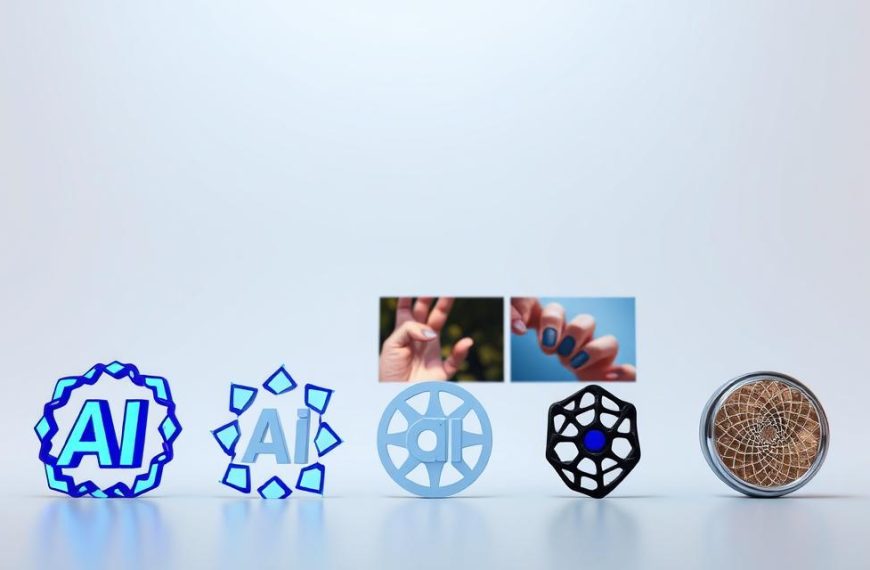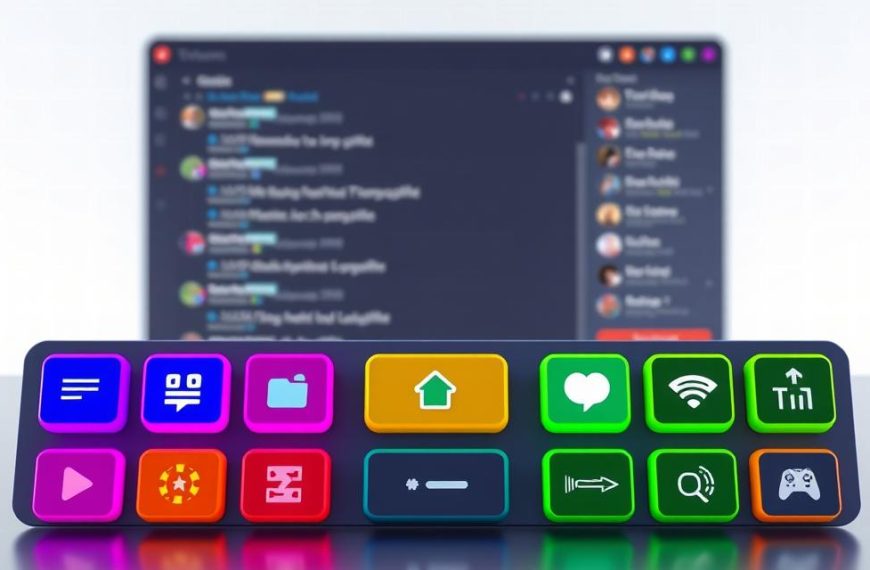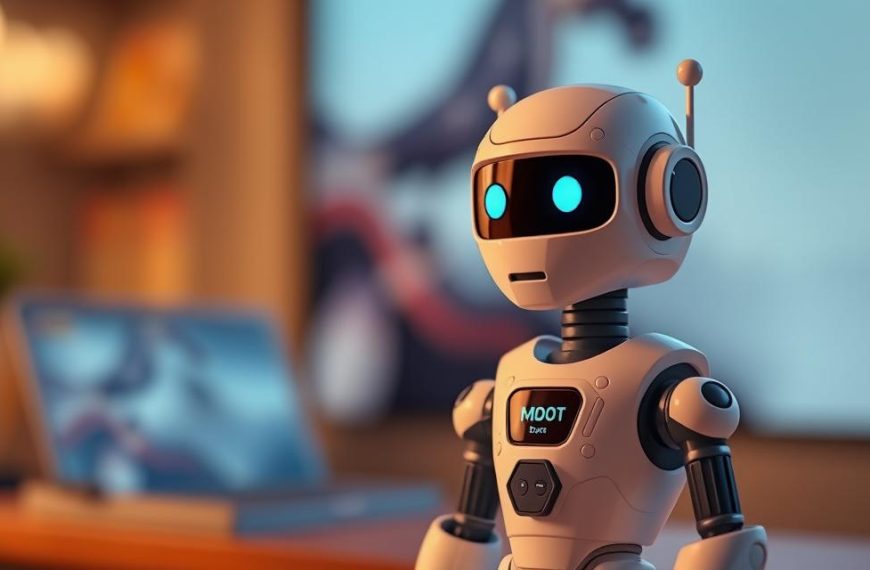The digital world is changing fast. Generative artificial intelligence is changing how we make and share information online.
Experts say by 2025, 90% of online content could be made by automated content creation systems. This is a big change in digital marketing.
Businesses see big chances but face big challenges too. Keeping a brand’s voice real is a big worry for companies using these new tools.
Checking if the content is right and fitting it into work flows is hard. Companies need to get past these problems to use ai generation tools well.
This new tech needs a smart plan to use it right. Knowing what works and what doesn’t is key for success in today’s content marketing.
The Fundamentals of AI Generation Systems
AI-powered content creation is changing how we make digital content. It uses smart computer systems to automate content making. This means moving from doing it all by hand to using smart tools.
Defining AI-Powered Content Creation
AI content tools automate the whole content process. They do research, write, edit, and share content. They don’t just copy human writing but make it better with data and patterns.
These tools look at lots of content to find what works best. They use this info to create new content that people will like. This way, content is made faster and better, using less resources.
Core Technologies Driving Automation
Two main technologies make modern content systems work. They help understand what’s being said, create relevant content, and improve based on feedback.
Natural Language Processing Capabilities
Natural language processing is key to AI content making. It lets systems understand human language well. This goes beyond just finding keywords to grasp the meaning and context.
These systems can tell the tone and style of text. This means content can match a brand’s voice. They also help create content in different languages, helping with global strategies.
These NLP systems get better over time. They learn from lots of language examples. This means content gets better as it adapts to new trends and what people like.
Machine Learning Algorithms in Practice
Machine learning gives these systems smartness. They look at lots of data to find what works best. This helps in several ways.
They use supervised learning to learn from examples. Unsupervised learning finds new patterns. Reinforcement learning makes strategies better based on feedback.
These tools can predict what people will like before it’s even made. They also make content for different groups of people. This is a big step up from making the same content for everyone.
Together, these technologies make generative AI systems that can create content as good as humans. As they get better, more companies can use them. This makes advanced content making available to everyone.
Business Applications of AI Generation
AI generation brings real value to many business areas. It helps companies work smarter and grow faster with smart automation.
Content Marketing Automation
AI changes content marketing by making more without losing quality. Businesses see 67% more output and 42% less research time. This makes content marketing automation a big win.
AI tools make social media easier by creating posts that fit each platform. They also look at trends to make content that people want to see.
Email Campaign Personalisation
AI makes emails better by using what it knows about each person. This makes more people open emails and buy things because they get what they want.
E-commerce Product Descriptions
AI helps online shops by writing product descriptions. It keeps the brand’s voice the same while handling lots of products.
Automated Catalogue Management
AI keeps product lists up to date on different websites. It makes sure everything is right and saves time by not needing people to check it all the time.
Personalised Shopping Experiences
AI looks at what customers like and suggests things they might want. This makes shopping more fun and increases sales by showing things that match what people like.
These examples show how AI helps make work better in marketing and e-commerce. It’s all about making things more efficient and effective.
Implementing AI Generation for Workflow Optimisation
Companies are now using AI generation tools to make content creation faster and better. These tools help them change how they work while keeping quality high.
Streamlining Content Production Processes
AI changes how content goes from idea to being published. It makes the process smoother and more consistent.
Reducing Manual Intervention Requirements
Automation cuts down on tasks that used to take a lot of time. It handles tasks like research and first drafts.
This lets teams focus on big ideas instead of doing the same thing over and over. The AI does the routine stuff, while humans guide the creative direction.
Accelerating Content Delivery Timelines
Using AI makes content creation much faster. It can make content up to 62% quicker, as seen in some companies.
This means companies can keep up with trends and what people want faster. They can deliver content on time, not just sometimes.
Resource Allocation and Cost Management
Using AI well changes how companies use money and people. It lets them be more creative and innovative.
Operational Expenditure Reduction Strategies
AI makes production cheaper over time. It means less need for outside help and overtime, saving money.
These savings grow as the system gets better. The first investment pays off more and more as time goes on.
Maximising Human Capital Utilisation
AI lets creative people do more important work. They focus on big ideas, telling stories, and connecting with audiences.
This makes teams more innovative and keeps quality high. They do more meaningful work and make more quality content.
AI and human creativity together make the best workflow outcomes. Companies get more content that’s both good and plentiful.
Addressing Challenges in AI Content Generation
AI content generation is very efficient, but it comes with big challenges. These include quality control and legal issues that need careful handling.
Quality Assurance and Authenticity Concerns
Keeping high standards is key with automated content. Businesses must have strong checks to handle any problems.
Maintaining Content Originality Standards
AI content can lack originality or have errors. These “hallucinations” can harm credibility if not fixed.
To solve this, use multi-layer reviews and plagiarism tools. Human editors are vital for fact-checking and making content unique.
Ensuring Brand Voice Consistency
Keeping a brand’s voice in AI content is hard. Many struggle to keep their tone and style.
To succeed, train AI on brand content and create style guides. Regular checks ensure the brand’s voice is consistent.
Ethical Considerations and Legal Compliance
AI content raises big ethical questions. It’s important to address these concerns early on.
Copyright and Intellectual Property Issues
AI trained on copyrighted material can infringe on rights. This is a legal risk that needs careful management.
Clear policies and content checks help avoid these risks. Companies also make agreements with AI providers about data sources.
Transparency in AI-Generated Content
People want to know if content is AI-made. How much to disclose varies by industry, but honesty builds trust.
Some show AI help subtly, others openly. The right approach depends on your audience and content goals.
| Challenge Category | Specific Issues | Recommended Solutions | Implementation Difficulty |
|---|---|---|---|
| Quality Assurance | Factual inaccuracies, lack of originality | Human review layers, plagiarism checks | Medium |
| Brand Consistency | Voice mismatch, tone inconsistencies | Brand-specific training, style guides | High |
| Legal Compliance | Copyright infringement, IP concerns | Usage policies, source verification | High |
| Ethical Transparency | Disclosure requirements, audience trust | Clear labelling, honesty policies | Low-Medium |
For AI content to work well, strong quality assurance is key. Mixing tech with human skills is the best way.
Practising ethical AI not only reduces risks but also boosts reputation. Companies that focus on transparency and responsibility do better with AI.
Conclusion
AI generation is changing how we create content. It makes things faster, bigger, and more personal for companies everywhere. This tech helps make lots of content quickly, in fields like marketing and online shops.
But, there are hurdles like making sure the content is good and ethical. Humans need to check the work to keep it real and right. Finding the right mix helps get the best results while avoiding problems.
The future looks bright for AI. It will get even better and more useful. Companies should use AI wisely to stay ahead in the digital world.

















